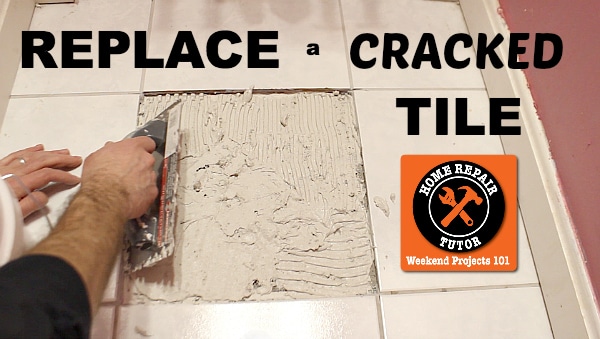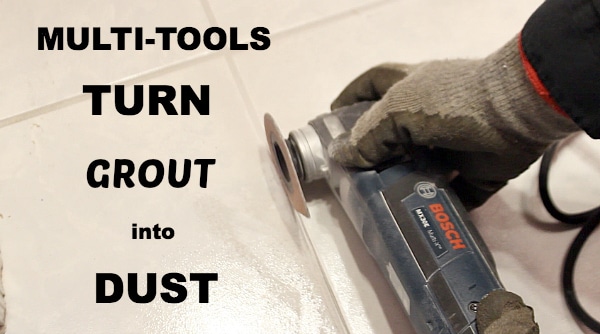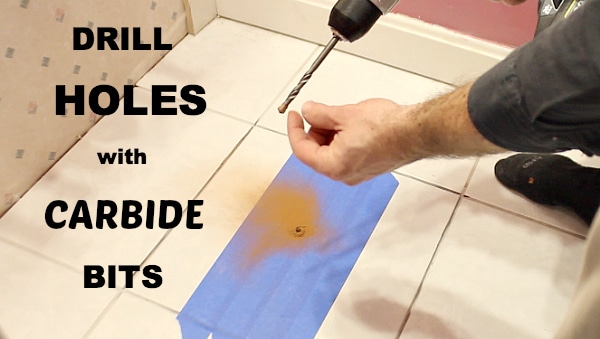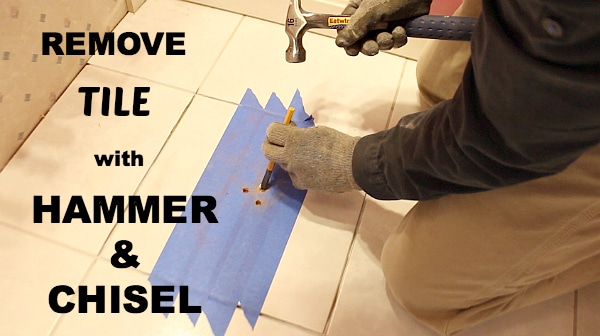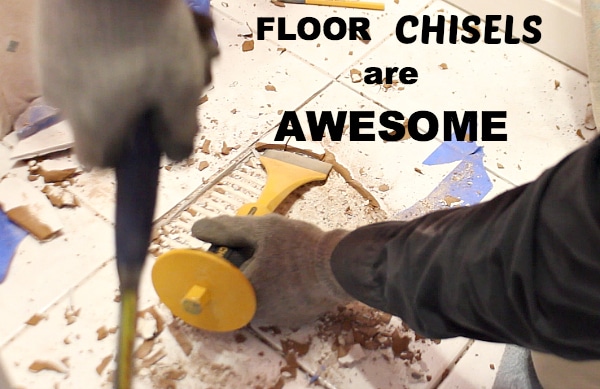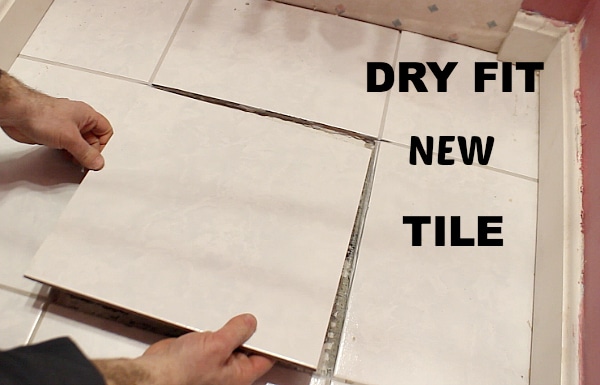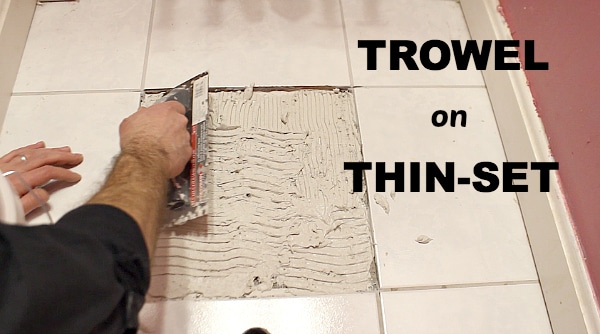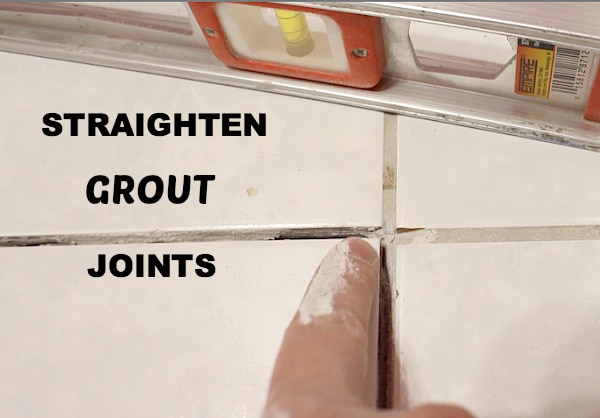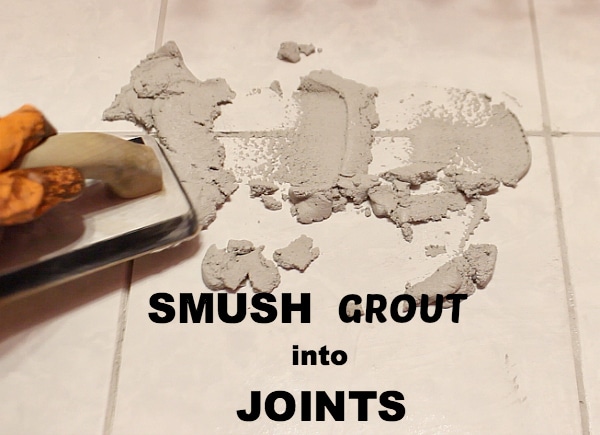How much do you think it costs to have a handyman replace a tile?
I’m willing to bet it’s close to what you’ll pay for a nice dinner out.
So maybe $50 to $100.
There’s nothing wrong with paying a pro.
But what if you could do it yourself, save that money, have a perfect fix, and neighborhood bragging rights?
Who’s to say you won’t do a better job than the person you’ll call in the Yellow Pages?
I know you can replace your cracked tile because you’ve got guts and passion.
Don’t let your fear of making a mistake hold you back.
I’ll break down this project one step at a time so that it’s simple and easy to follow. Much like the directions to assembling a bicycle but BETTER 🙂
In the end, you’ll be amazed at what you can do with a hammer, chisel, and some patience.
Replacing a tile only takes 1 day and I promise you can go to a nice relaxing wine-infused (or beer-infused in my case) dinner with the money you save!
Cracked Tile Supply List
These are the supplies that make replacing a tile easy
- Estwing Hammer
- 1/4 inch and 1/2 inch Cold Chisels
- 3 inch Floor Chisel
- Drill (DeWALT Drill & Impact Driver Set)
- 1/4 inch Carbide Tip Drill Bit
- Bosch Oscillating Multi-Tool
- Grout Attachment for Multi-Tool
- Painter’s Tape
- Safety Glasses
- Ironclad Gloves
- Respirator
- Hearing Protection
- Margin Trowel
- Trowel for Mortar (1/4″x1/4″)
- 2 Gallon Bucket
- Grout
- Grout Sponge
- Thin-Set Mortar
I did this project in a small bathroom with barely any room to maneuver – good thing I’m only partially claustrophobic.
The first step you should take when replacing a cracked tile is to remove the grout around it.
I’ll show you what tools you can use for grout removal and share my favorite one that can reduce this part of the project to 10 minutes!
But let me first discuss SAFETY.
Safety First, Make Your Mom Proud
Just kidding about that last part, my Mom would never say that but she would be disappointed if I didn’t mention all the safety precautions for tile removal.
Before you get started make sure you have
- Hearing Protection
- Safety Glasses or Goggles (I almost typed Googles, haha)
- A Respirator
- Gloves
- And Finally, Long Sleeves
Pounding hard tile with a hammer and chisel is loud. You’ll want hearing protection for yourself. And unfortunately, your family members living with you might want some as well.
Shards of tile are sharp. If a piece hits your eye you’ll be in the emergency room. Goggles or safety glasses are a must. Gloves and a long sleeve shirt will also protect your hands & arms from being cut.
The dust from this project is dangerous for your lungs. Actually, any fine particles are bad for your lungs and a respirator will improve your health during DIY projects.
Okay, I think that covers all the important safety tips.
Here’s my first HUGE tip…
How to Remove Grout in Less Than 10 Minutes
Patience isn’t my strength when it comes to grout removal.
You can use 4 different kinds of tools to accomplish this task
- Handheld Grout Saw
- Carbide Tipped Cutting Knife (I use this to cut cement board, too)
- Triangular Grout Saw
- Oscillating Multi-Tool with Grout Attachment
The first three tools will cost you about $10 each but it will take a ton of work.
I highly recommend using an oscillating multi-tool and buying a grout attachment for it.
It seriously took me less than ten minutes to turn the grout into powder.
Yes, a multi-tool is pricy but a fantastic investment for any DIYing homeowner.
And if you have arthritis you’ll love this tool way more than a handheld grout saw. It does all the work for you and is super safe to use.
The brand I use is Bosch because their multi-tool removed all the grout in my shower floor without a single hiccup.
You can check out that project right here.
With the grout gone, it’s time to get rid of the cracked tile.
How to Remove the Old Tile
Start removing your tile by applying blue tape to it and then drilling a few holes into the center of the surface.
Use a 1/4 inch carbide-tipped tile drill bit. This will chew through the tile like a guinea pig eating lettuce.
Btw, we have two guinea pigs and they are 5 years old – I think they might outlive me due to their vegetarian diet and low-stress lifestyle.
Blue tape allows the drill bit to grip the tile without slipping.
Grab a 1/4 inch or 3/8 inch cold chisel and hammer.
Position the chisel at a 45-degree angle in the holes you drilled. Then smack it with your hammer.
Do this repeatedly until you remove about 4 square inches of tile.
Then you can move onto the big boy, the 3-inch floor chisel. Use it to dislodge larger pieces of the tile.
Always chisel the tile from the inside to the perimeter. This way you lessen the chance of damaging the surrounding tiles.
You’ll also have to remove most of the thin-set mortar on the floor substrate. Otherwise, the new tile will sit higher than its neighbors.
Your chisel and hammer are good for this step, too.
Dry fit the new tile and see if it sits a bit lower than the other tiles. Check that this is the case by using a 2-foot level.
You want the new tile to sit lower than its counterparts because the new thin-set will add height.
With the old thin-set gone and the new tile ready to go, you can install the new tile.
How to Replace a Cracked Tile
I watched Abbott & Costello as a kid and they were always getting into strange predicaments.
Don’t let this happen to you when applying thin-set and grout.
I’ll share some good techniques so that you don’t have to explain why your new tile looks worse than a hungover pair of comedians.
Since my tile was 1/4 inch thick I used a 1/4 inch by 1/4 inch trowel to spread thin-set.
The trowel ridges should keep their shape, which indicates you mixed the thin-set correctly.
You should also back butter the new tile with thin-set to help it adhere better to the old substrate.
All this means is that you should add a thin layer of thin-set to the underside of the tile.
Set the tile in place and firmly press it on all sides. Then check that it’s level and the grout joints are straight.
Let the thin-set dry for 2-3 hours before adding the grout.
Mix up the grout so that it has the consistency of peanut butter.
You can then spread it onto the center of the tile and smush it, yes I said smush, into the grout joints.
Then use your rubber grout float, held at a 45-degree angle, to scrape the grout off the surface of the tile.
Remove all of the grout from the tile and wait about 15-30 minutes or whatever the grout manufacturer recommends.
A film will develop on the surface of the tile and you’ll need to remove it with a moist grout sponge.
Wait another 60 minutes and buff the surface of your new tile with a microfiber cloth.
I love these cloths because they leave the tile looking shiny and new.
If you’d like to see me in action (pounding out a tile in a 2 foot by 4-foot bathroom, man it was tight) then check out my video for all the sweaty details.
What’s Next
If you’re doing a bathroom remodel and need help, join one of our online courses – they’ll make your bathroom renovation much easier!
Let me know if you have any questions and I’ll do my best to help.
Thanks as always for reading, watching, and being part of our awesome community.
Cheers,
Jeff



